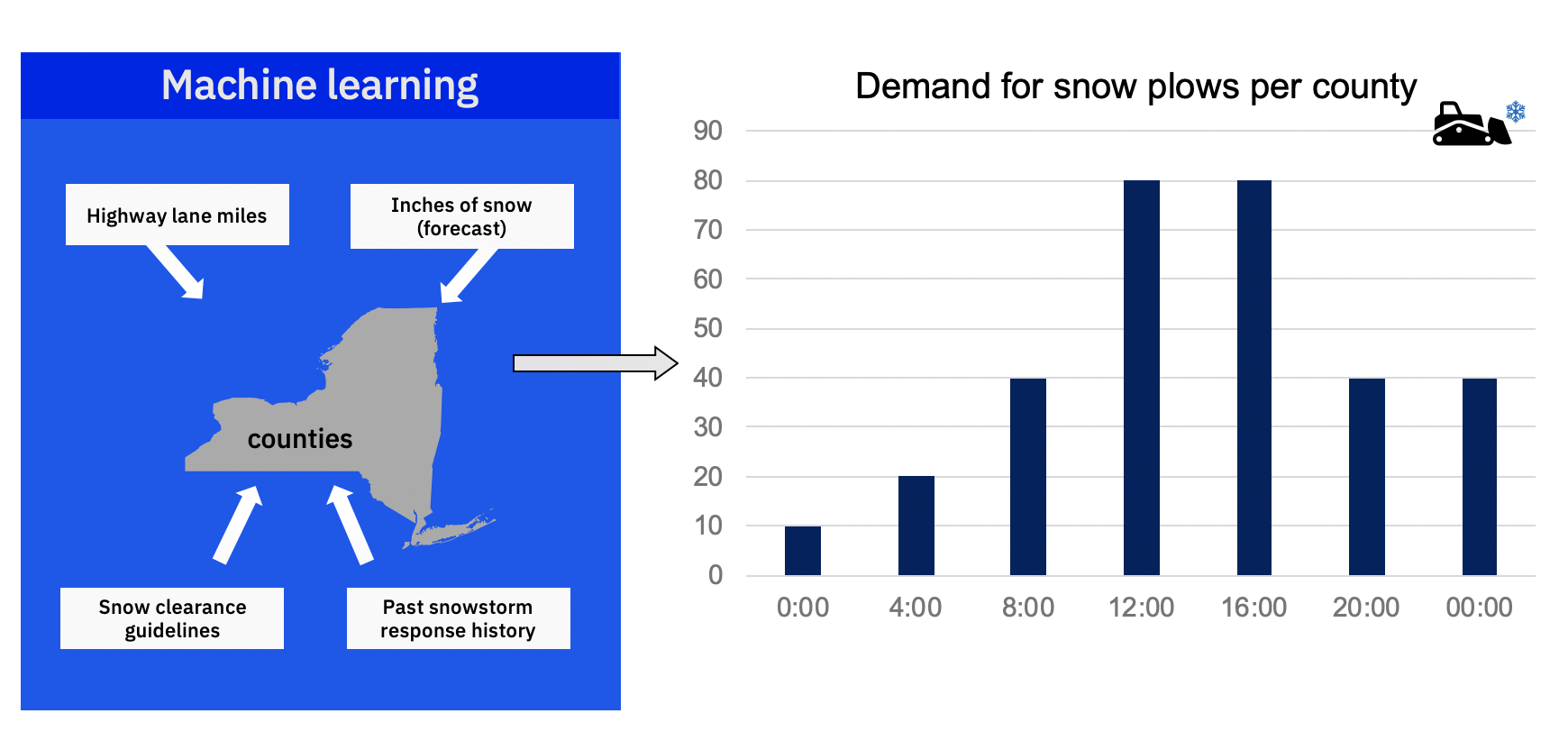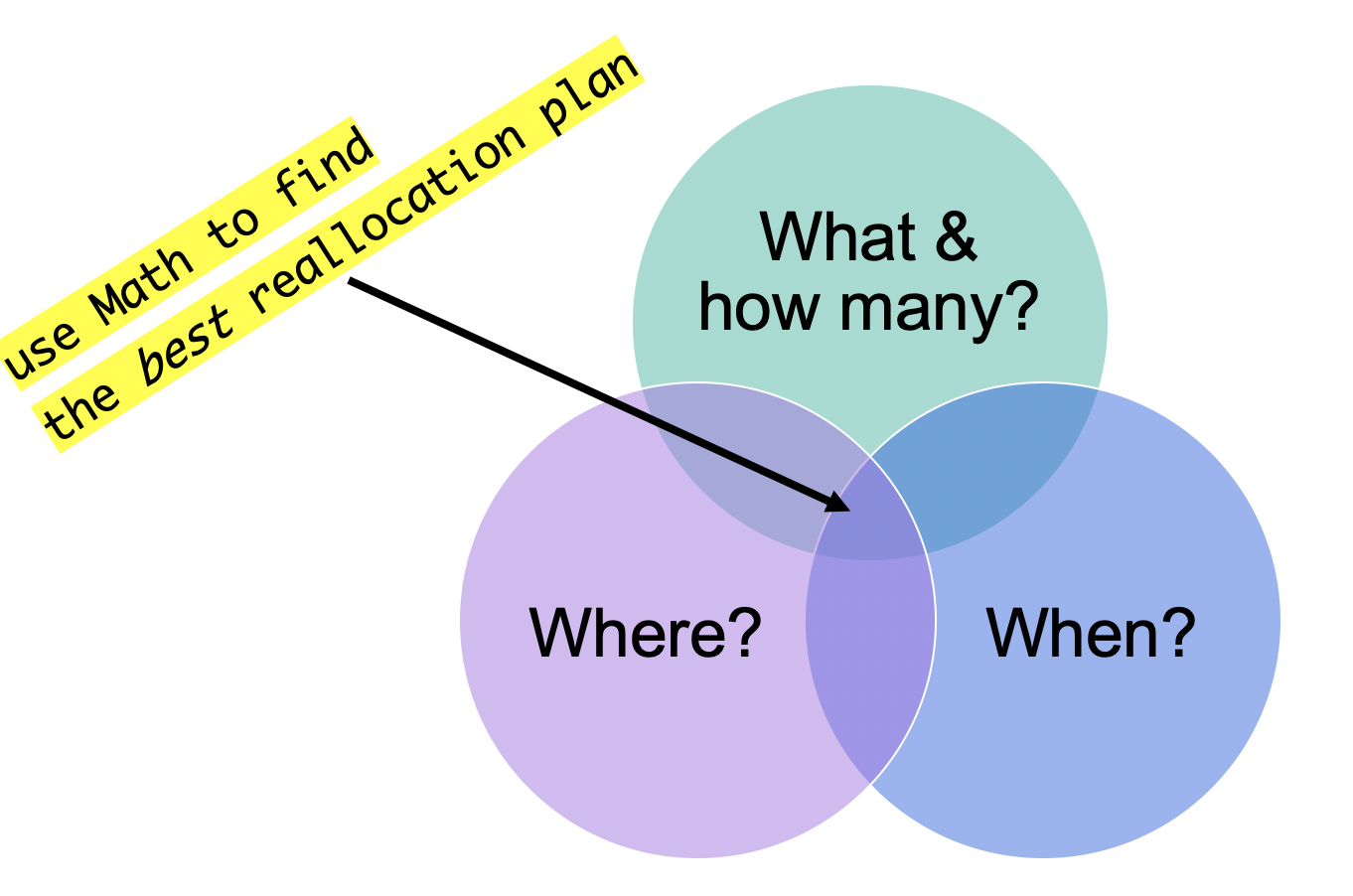What is Emergency Response?
At the time of writing, we are deep into the COVID-19 pandemic. Hospitals, supermarkets, and government organizations alike are overwhelmed by the massive demand for services, while trying to manage their limited resources and assets, at the same time struggling to keep people safe. How should resources be allocated _now so that they are exactly where patients and doctors need them the most? _How can ventilators be _re-allocated over time _based on evolving demand and geographical location, while subject to safety regulations and travel constraints? How do we safely return to work once things start getting back to “normal”, whatever this might mean?
Due to its unprecedented nature, automating decisions around an event like the COVID-19 pandemic is complex and requires careful analysis, accurate data that may not be readily available, not to mention any political and administrative considerations.
_This real and large-scale disruption is what’s consuming the world at this moment, yet it is only one example of an emergency that requires a speedy and accurate response, managing limited resources, subject to making sure operational costs do not skyrocket. _As we will see, efficient emergency response requires a combination of AI technologies, in particular machine learning and decision optimization.
The methodology discussed in this article can be applied to address various types of large-scale disruptions. We will specifically focus on weather emergencies, such as snowstorms, as their impact can be devastating. According to the National Centers of Environmental Information and NOAA Climate.gov, the U.S. has sustained **258 weather and climate disasters since 1980. **The cumulative cost for these 258 events exceeds $1.75 trillion.
Example: Responding to a massive weather event
When a severe weather event is about to strike, be it a snowstorm, a flood, or an earthquake, an operations manager for a state or region must quickly decide how to best meet the demand for resources and assets such as snowplows, water, police, and rescue vehicles.
Let’s look specifically at responding to snowstorms. The demand for snowplows depends on the snowfall forecast, and some regions may be more heavily impacted than others, requiring more snowplows than are available when the storm strikes. A machine learning model can predict demand for trucks in each county, taking into account all relevant information, such as the snowfall forecast, safety guidelines, and past snowstorm history (Figure 1).
First things first — we need an accurate demand forecast

Figure 1: Machine Learning predicts demand for snowplows in each county in each time period
We then need to decide how to reallocate these assets from regions with low impact to those highly impacted, e.g. how many to move from counties C1 and C2 to C3, C4, and C5, making sure there are enough snowplows to cover the demand in each county.
However, let’s not forget that the snowfall forecast will change every few hours, as the snowstorm moves through the state, so we need to keep moving the trucks around, taking into account the weather forecast and the level of backlog at the time (accumulation of snow).
We need an efficient way to reallocate snowplows and other assets
Why predicting demand for resources is key but not enough to solve the emergency response problem?
Predictions generated by our machine learning model may be sufficient to make a decision if we consider one county at a time and there are no conflicting priorities. However, once we start introducing some real-life complexity, dependencies, and limited assets, determining the optimal reallocation plan becomes more challenging.
For example, what if two counties on the opposite sides of the state are expected to receive the most snowfall at the beginning of the storm? In this case, where do we send the snowplows and how many, if we don’t have enough to cover all demand?
A forecast doesn’t tell us how to allocate limited resources
What about a situation in which county C1 needs resources the most at the beginning of the storm, but a few hours later the resources are needed in C2 and C3 on the other side of the state? Do we move the snowplows to C1, even if it makes it impossible to get them to C2 and C3 before they get hit by the storm? How would this delay affect the backlog of snow and road safety?
The decisions we make are interdependent, therefore we must make them in conjunction with each other
To create a feasible plan, the decisions we make about how to allocate assets in the beginning of the storm need to be made in conjunction with the reallocation decisions later on during the storm. Additionally, we must not make decisions about one county in isolation from the decisions for other counties, as they all compete for the same limited resources.
Finally, how many decisions are there? As an example, let us consider 2,000 snowplows and 60 counties. Let’s say we consider reallocating them every 4 hours during a 24-hour snowstorm. How many reallocation possibilities are there? In any one of 6 time periods, we can decide to move 0–2,000 snowplows from any one of 60 counties to any other one of 60 counties. Taking a very rough estimate without considering distance, availability, snow backlog, demand constraints, and multiple types of assets, the number of options we may need to consider is 60602,000*6 = 43,200,000! No human can possibly determine manually which one of these decisions is optimal.
A decision involving reallocation can easily require evaluation of 43,000,000+ options! No human can possibly determine manually which one of these options is best.
How can AI and Decision Optimization help?

Decision Optimization uses insights from Machine Learning to make optimal decisions
Decision optimization uses very specialized algorithms and techniques to efficiently search through and evaluate millions of potential solutions, without enumerating each one of them.
While machine learning can take into account all available data and past history to predict the demand for snowplows and other resources in each county or region at any given time, decision optimization (DO) can take it a step further and generate a plan that is _optimal for the entire state over the entire planning horizon, subject to limited resources (e.g. snowplows), other constraints and dependencies (available types and quantity of resources, current location of each snowplow, travel distance and time), and optimization metrics (minimizing total cost, maximizing safety/customer satisfaction, minimizing total truck travel distance). _Not only does it offer us valuable insights, but it also generates _an actionable schedule or plan _(Figure 2).
#machine-learning #ai #optimization #covid19 #emergency-response #deep learning